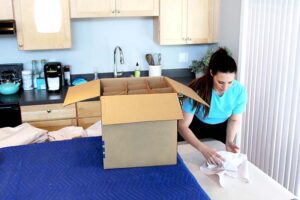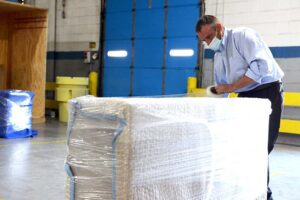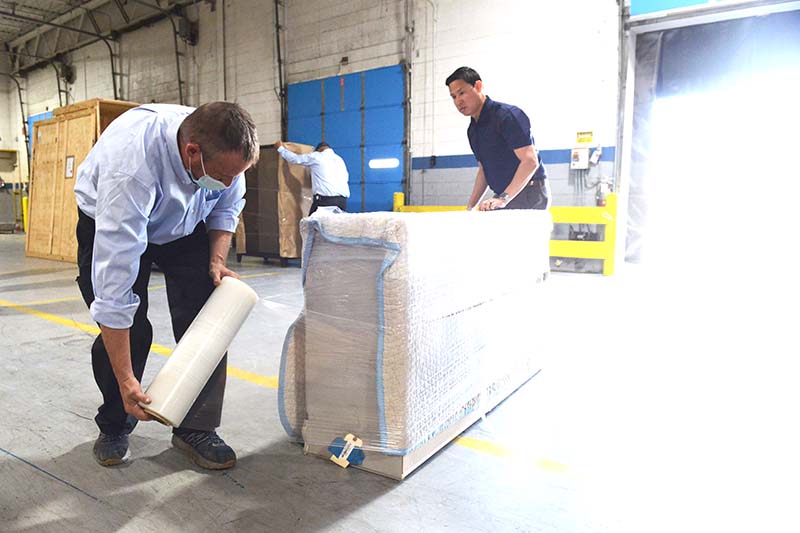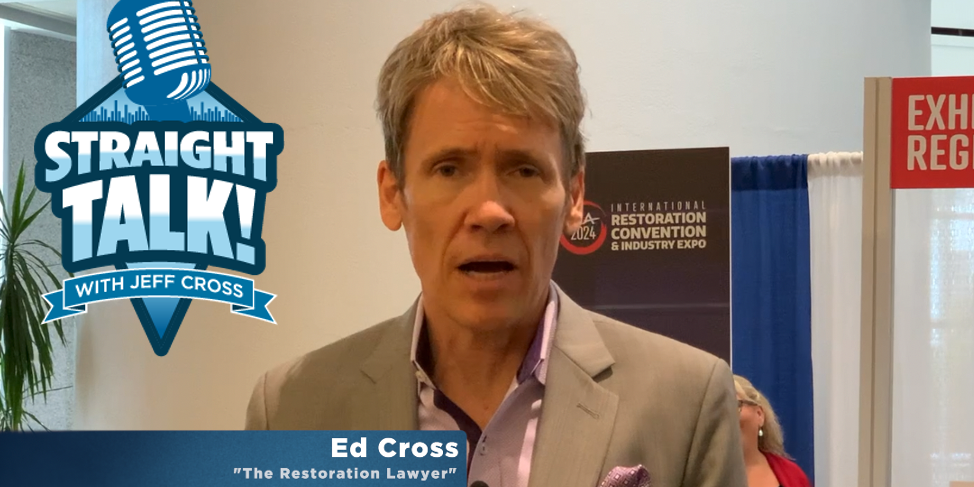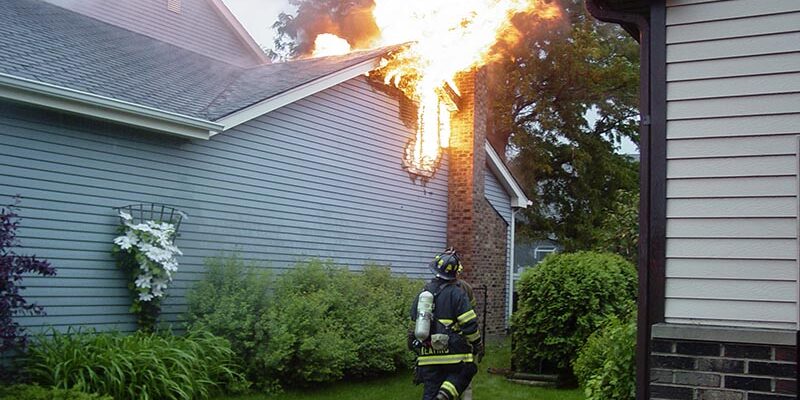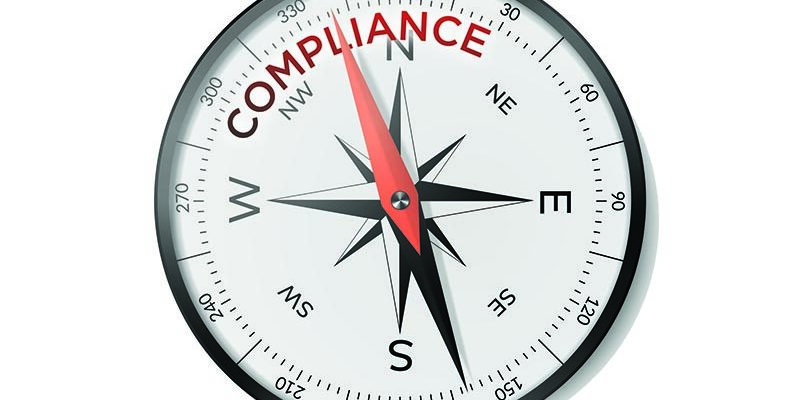Contents Quicksand

By David Gavilanes
The contents portion of a claim is not always something that restoration contractors look forward to—and for good reason. Few of us in the restoration industry call ourselves contents restoration experts to begin with. Fortunately, the number of contents specialists is growing. In this article, we discuss how to prepare for a contents claim and why reaching out to a specialty subcontractor is the best call to make in order to keep your contents safe and your customers happy.
The things I’ve seen on contents claims
I have seen it with my own eyes. When working in apartment complexes with damage to multiple units, you sometimes come across other companies handling claims for their clients. The times that I have been on those losses were always because someone made the choice to outsource the contents to a company that I worked for. What I witnessed from restoration contractors who didn’t make that call and did in-house work instead is why the industry has seen an emergence of standalone contents restoration companies.
Every so often, I catch wind of a job that one of our franchisees is a part of, and they’re helping correct the same mistakes. Typically, a non-specialized restoration company finds that they are in over their heads with the amount of contents impacted by the loss, and that company needs to get out of this situation. When this happens, I know at least two things were not done correctly: inventory and packing.
Three common contents mistakes
Below are just a few of the most common mistakes I see companies make when looking to do in-house contents.
Mistake #1: There is no inventory
People own a lot of stuff, and when there is no formal, systematic process to inventory all those belongings after a property loss, it becomes overwhelming very quickly. Having the proper technology and system(s) to inventory all impacted contents makes the pack-out process less daunting and ensures no contents will be forgotten or misplaced at any point along the way.
Mistake #2: The company packing out the job the first time used the biggest boxes they had
This is probably the single biggest rookie mistake we see as contents specialists. People see a large box and think, “Perfect! I’ll put as many things as I can in here!” What they don’t realize is that the payload of a large box is not much different than the payload on a small box.
The construction of a box is made of a single-ply carton, regardless of cubic size. The heavier the contents of a box, the less stable the larger boxes become. If your boxes become unstable, damage to contents becomes inevitable—and unhappy customers can be detrimental to business.
Mistake #3: No contents padding or protection
A third common mistake—and my personal favorite of the “we do contents in-house” hallmarks—is when I see hard furniture covered in only stretch wrap. What exactly is going on here?
There is no padding around any of the furniture, and a thin plastic film covering is the only means of protection. Instead, they should have been utilizing furniture blankets, which
are used to absorb bumps and keep furniture from scratching while it’s being moved from place to place.
The furniture blanket is a basic investment. It can be frequently washed and re-used over and over again in both pack-outs and pack-backs. Restoration companies tend to accumulate more blankets as they do more contents work. Having a lot of blankets is a sign that you are doing something right.
What makes a contents company different?
Despite these common mistakes, there are several full-service restoration companies that make the necessary investment to do contents the right way (Spoiler alert: this investment involves more than just furniture blankets). Three key criteria that make for a good contents restoration company are space, storage, and staff.
Key criteria #1: Space
The first critical component to a successful contents restoration operation is having a location that is secure and accessible to relocate the entirety of not just one single-family home, but many. The warehouse area that contents specialists typically retains should have more than 10,000 square feet of storage space. That being said, having a large warehouse alone will not ensure the best outcome for customers—which brings us to the second differentiator for contents specialists.
Key criteria #2: Storage
Ideally, storage vaults are also used within the warehouse space to separate jobs, and, when possible, those vaults are double stacked. I have seen firsthand companies that relied on industrial shelving as the only method of storing and separating contents. This may not seem like such a violation of common sense given that all big box stores operate in that fashion. The differences, however, are significant.
At a big box home center, the inventory stored is typically re-stocked with the same or similar items. At a big box food and home goods warehouse store, the products are separated by category, and re-stocks are timed with sales expectations. Not to mention that all items are new and packaged for retail. None of this is true for contents restoration jobs.
Chaos ensues when contents are not properly stored. In the likely event that the contents may have been inventoried but not scanned to a location, the warehouse manager spends their time looking through aisles like a married man looking for coconut milk at the grocery store for his wife (we’ll find it one day, fellas).
Even if the inventory system allows someone to pinpoint the location of a box or item on a shelf, once removed, the space becomes occupied by another box or item as space is limited. When the original item is sent back to be stored after cleaning, it will likely be placed back on a rack. However, it may be too close to other jobs at that point. Co-mingling of jobs and cross-contamination becomes an issue in these situations.
Storage vaults are the solution to these problems, which is why they’re integral to the success of contents specialists. Storage vaults are dedicated to single claims and never co-mingled. When paired with advanced inventory software, this is a major boost to the clients’ level of confidence that the contents job and their cherished belongings are safe from being mixed up or lost.
Key criteria #3: Staff
Another critical difference that separates standalone contents companies from those who occasionally partake in the practice is the staff. A regular mitigation company that goes from handling contents solely when responding to a loss all the way to doing a full contents pack-out is not likely to have a team that is properly trained or prepared for such an undertaking. Therefore, as mentioned before, you run into common mistakes: boxes are overstuffed and generically labeled, furniture is stretch wrapped but not padded, and breakage becomes a “˜when,’ not “˜if’ scenario.
Companies specializing in contents restoration, however, have dedicated pack-out (and pack-back) crews who are specifically trained on how to inventory contents, separate items by material type, wrap and load breakables, and more.
Just like any other outstanding property restoration company, a good contents restoration company also focuses on staff training as a constant and never-ending function of the business. It is critical for contents providers to continually build and refine their technical and business experience. In this way, they ensure that they have specialists who can make accurate assessments of damage, communicate clearly with clients, and deliver on expectations. This not only does wonders for the comfort level of the insured, but it also gives the referring party high marks for avoiding the common stumbling blocks of a contents claim.
Great partnerships
The case has been made for contents to be considered a specialty service not just by myself, but by the many specialty sub-contractors that have made the investments in warehouse space, storage, training, and staffing.
If you are looking to partner with a contents company here are two things to look for:
1 | Visit their warehouse
Examine the organization and cleanliness of the space. Most of the contents-only business owners that I know take great pride in how organized their space is.
2 | Inquire on the type of inventory software used
Adequate inventory software almost guarantees that the pack-back will be a pleasant experience for the customer as well as the team returning the contents. When used correctly, inventory software allows the contents company to create an accurate inventory of boxed items and single items as the job progresses.
Items and boxes are then scanned to the company’s warehouse where they can be moved and processed while maintaining a clear chain of custody. When the job is complete and contents are ready to be delivered back to the property, the team moving the contents back in has certainty that they are returning everything they promised to return.
The best reason to partner with a contents restoration expert is to free up your resources and focus on what you do best. When you let qualified contents companies handle the contents portion of a property restoration loss, you take the pressure away from your staff, and you’re able to take on more work that you specialize in. You’ll be able to take on jobs without hesitation, knowing that the contents company that you hire will have your back when you need them. In this way, your contents company will effectively keep you out of the “˜contents quicksand,’ and making your customers happy when they return home as well.
David Gavilanes has worked his way up through the industry as a contents technician, manager, magazine editor, and director of the Real Contents Training company. Today, Gavilanes oversees the Blue Kangaroo Packoutz training academy as their Training Development Leader and works directly with the BKP franchisees as their Regional Business Coach. You can reach Gavilanes via his website at www.bluekangaroopackoutz.com.

